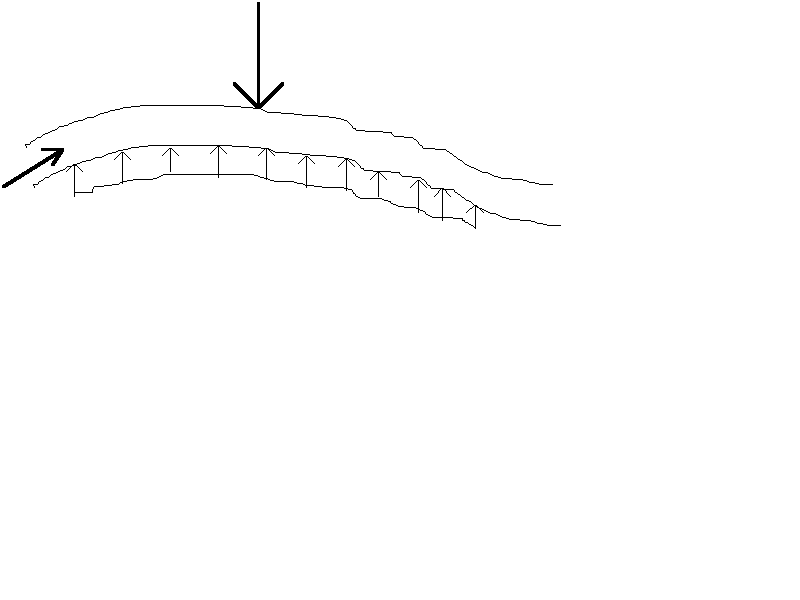
CE 577 |
26 March 1992 |
|---|
Open book, open notes.
Answer all questions. Please state any additional assumptions you made, and show all work.
I. (45%) Morgan Creek receives effluent from the Chapel Hill wastewater treatment plant (CH-WWTP). In addition, there is a significant non-point agricultural runoff of BOD beginning at the CH-WWTP and continuing downstream for 8 miles. Calculate the dissolved oxygen concentration 10 miles downstream of the CH-WWTP outfall.
CH-WWTP
Qw = 5 cfs
(CBODU)w = 40 mg/L
Cw = 2 mg/L

Qu = 40 cfs
(CBODU)u = 2.5 mg/L
Cu = 7.2 mg/L
Lrd = 4 mg/L/day
Additional Information:
U = 0.40 ft/sec = 6.55 miles/day T = 15oC DOsat or Cs = 10.1 mg/L (at 15oC) H = 6 ft = 1.83 m
In-stream CBOD deoxygenation rate (kd) = 0.264 day (at 15oC)
CBOD settling rate (ks) = 0.080 day-1 (at 15oC)
II. (35%) The deadly insecticide, hexachloro-toxene (HCT), is flowing into the Haw River from a small tributary draining agricultural land. The concentration of HCT in the main channel at the point of confluence (milepoint 0) is 1.2 mg/L. At this point the total stream flow is 1.7 cfs. Three miles downstream the concentration is 0.32 mg/L. The stream flow at 3 miles is measured at 2.9 cfs. What is the concentration of HCT at the point the Haw River flows into Jordan Reservoir (milepoint 12, flow = 3.9 cfs) in mg/L? Assume that the stream velocity is constant throughout the reach of interest. Assume also that there are no additional sources of HCT, and the only sink is the 1st order (in HCT) decay of the insecticide.
III. (20%) True/False. Mark each one of the following statements with either a "T" or and "F".
1. Algal respiration never causes the dissolved oxygen concentration to exceed the saturation value.
2. Oxidation of NBOD is subject to retardation by low dissolved oxygen concentrations.
3. The best way to estimate kd's is from Stumm & Morgan's empirical formula.
4. The rearation coefficient is most commonly a function of temperature, stream velocity, stream slope and stream depth.
5. In the absence of sources and sinks, the concentration of a conservative substance does not change along the length of a river.
6. Dispersion is the least important mixing process in river modeling.
7. The Thomas method is used to estimate CBOD settling rates.
8. A stream receiving "n" number of point discharges of CBOD can have as many as "n" local minima in its longitudinal dissolved oxygen profile.
9. CBOD and NBOD can be combined into a single pollutant term when the settling rates are equal.
10. Deep rivers are most susceptible to effects of sediment oxygen demand.